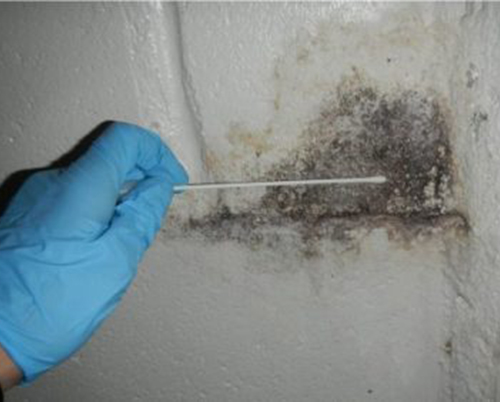Testing Air Quality After Mold Remediation
Testing Air Quality After Mold Remediation
Blog Article
Your Ultimate Overview to Article Mold Remediation Strategies
Navigating the world of post-mold remediation methods is a thorough procedure that requires interest to information and a detailed understanding of the intricacies involved. In the aftermath of mold and mildew invasion, understanding just how to successfully remove the mold and stop its reoccurrence is critical for preserving a healthy and balanced interior environment. From choosing the best cleaning and sanitizing methods to applying techniques for lasting mold and mildew prevention, each action in the removal trip plays a vital role in making certain a successful end result. As we start this expedition of post-mold remediation strategies, we will certainly reveal the vital strategies and finest methods that can aid you restore your room to its pre-mold condition and safeguard it versus future mold and mildew risks.
Comprehending Post-Mold Removal Refine
After completing the mold remediation process, it is critical to understand the post-mold removal strategies that are essential to guarantee a reliable and complete clean-up. As soon as the mold has been removed, the following step includes cleaning and disinfecting the influenced locations to avoid any type of regrowth of mold. This consists of using specialized cleaning agents to clean down surfaces and eliminate any type of staying mold and mildew spores. It is necessary to dry out the area completely to inhibit the development of mold in the future (Post Mold Remediation Report). Proper air flow and dehumidification can assist in this process.
Moreover, performing a last assessment post-remediation is crucial to make sure that all mold has actually been effectively removed. If the inspection exposes any lingering mold and mildew, extra removal might be required.
Effective Cleansing and Sanitizing Approaches

Protecting Against Future Mold Growth

Significance of Correct Ventilation
Correct ventilation plays a vital duty in protecting against moisture accumulation, a crucial factor in mold and mildew development within interior environments. Effective ventilation systems aid eliminate excess humidity from the air, reducing the opportunities of mold and mildew spores discovering the wetness they need to spread out and germinate. Without appropriate air flow, indoor areas can become a breeding ground for mold, bring about possible health threats and structural damage.
By making sure proper air circulation, ventilation systems can also assist in drying moist areas quicker after water damage or flooding occurrences, additionally preventing mold development. what to do after mold remediation. In rooms like restrooms, attic rooms, cellars, and kitchens where moisture degrees often tend to be greater, setting up and preserving effective air flow systems is vital in avoiding mold and mildew invasions

Surveillance and Upkeep Tips
Given the important duty that proper ventilation plays in avoiding mold growth, it is vital to develop reliable surveillance and maintenance ideas to guarantee the continued performance of air flow systems. Routine evaluations of air flow systems ought to be performed to look for any indicators of blockages, leakages, or malfunctions that can impede appropriate air flow. Monitoring humidity levels within the residential property is additionally essential, as high moisture can add to mold and mildew growth. Mounting a hygrometer can help track moisture degrees and alert home owners to any spikes that might call for attention. In addition, guaranteeing that air filters are on a regular basis cleaned or changed is essential for preserving the performance of the ventilation system. Implementing a routine for regular upkeep tasks, such as duct cleansing and a/c system inspections, can assist protect against issues before they intensify. By staying conscientious and proactive to the condition of air flow systems, straight from the source homeowner can properly mitigate the try this danger of mold and mildew regrowth and keep a healthy and balanced interior environment.
Verdict
In verdict, post-mold remediation techniques are essential for guaranteeing a safe and tidy atmosphere. Comprehending the process, executing effective cleansing and sanitizing methods, protecting against future mold growth, keeping appropriate air flow, and routine monitoring are all important action in the removal process. By following these standards, you can successfully remove mold and stop its return, functioning or advertising a healthy living area for all occupants.
In the results of mold invasion, knowing just how to efficiently get rid of the mold and prevent its reoccurrence is paramount for preserving a healthy and balanced indoor setting. Once the mold and mildew has been gotten rid of, the next action involves cleaning and disinfecting the influenced areas to stop any kind of regrowth of mold - After mold remediation. After getting rid of noticeable mold and mildew development, it is important to clean all surface areas in the afflicted location to remove any remaining mold and mildew spores. To better enhance mold prevention procedures, it is necessary to deal with underlying problems that at first led to mold and mildew growth.Offered the essential role that proper ventilation plays in stopping mold and mildew development, it is imperative to establish effective tracking and maintenance suggestions to make sure the continued performance of her comment is here ventilation systems
Report this page